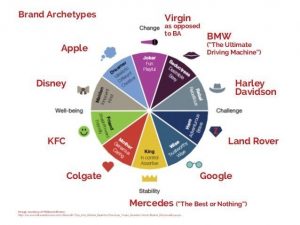— December 7, 2018

QuinceMedia / Pixabay
With the right last-minute Google Ads campaign, there is still time to cash in on 2018 holiday spending. Black Friday and Cyber Monday have come to an end and you may be knee-deep in fulfillment, but it’s not over yet. It’s time to get into strategy mode.
There are still some big international online shopping days ahead, such as December 11th – Green Monday, December 15th – Free Shipping Day (UK), December 17th – Super Saturday (USA) and December 26th – Boxing Day (UK, Canada, Australia, New Zealand and South Africa). These include shoppers who are now on the hunt for holiday gifts and then those looking for last-minute deals and spending their vouchers or using coupons from exchanges after Christmas has come and gone.
It’s time to get into strategy mode: adjusting your Google Ads campaigns to cast your net in the right places for the right people. Here are our top last-minute Google Ads campaign tips you can implement today!
1. Plan Your Budgets
The first thing you need to do before you create your campaigns is plan out your budgets from now until January. Bear in mind that as competition is tighter during this time, bids will need to be higher to ensure you’re able to compete.
Throw too much money in casting a wide net and you risk high spend on non-targeted clicks that don’t convert. Throw too little money at your campaigns and you run the risk of losing impressions from critical searchers in your niche. In short, it’s a balancing act. Therefore, you should have a rough idea of what you want to spend, but to determine your daily budgets. By setting daily budgets with account alerts, you can monitor your campaigns daily to make real-time changes.
2. Diversify Your Campaign Types for Max Success
To make sure you’re leaving no stone (sale) unturned, you want to be running many campaigns that target niche markets. This way you can tailor specific promotions, products and content to segments more interested in what you’re selling as well as plan your budgets. To plan your last-minute Google Ads campaigns, you should create separate campaigns that reach interested customers at each stage of the buying process: awareness, remarketing and previous shoppers.
Here are some ways to segment your campaigns:
- Location and other geotargeting
- Product targeting based on needs – eg: gifts for her/him/dad/mom/kids
- Remarketing and other campaigns based on previous products/spend/behavior
3. Mix Up (and Automate) Your Bidding Strategies
Different niches will have different levels of competition. Therefore, you need to plan your bidding strategies and watch them like a hawk to make sure you are getting enough of the right clicks that generate sales. However, with the help of automation bidding, you can try a few strategies and ensure they are optimizing while you’re busy doing other things. Google Ads offers the following automated bidding options to marketers:
- Maximize clicks
- Maximize conversions
- Target CPA
- Target ROAs
- Target search page location
- Target outranking share
- Enhanced CPC
If you haven’t tried Google’s Enhanced CPC (ECPC) for display, shopping and search, now is the ideal time. ECPC allows Google to automatically increase bids on product campaigns for those searchers more likely to generate sales. They do this by using conversion and click data, making holiday shopping season the right time to test ECPC.

Pro Tip: If your monthly Google Ads budget is a minimum of $ 500, Traffic Booster will manage (implement and optimize) all your YouTube and Google search, display and shopping campaigns within that budget. It won’t cost you anything over the budget you’re already spending, while bringing awesome traffic and freeing up time for you to concentrate on other things. All plans include the set-up of your campaigns and full ad budget.
4. Remarket to the Max
Remarketing campaigns are key during this time. We know that it is much cheaper to convert a previous shopper than a new one. Your previous customers and potential shoppers who already know you can more easily convert once they are reminded of you. This makes remarketing a key campaign for your holiday Google Ads campaign strategy.
Choosing your remarketing audiences should be based on their checkout process states, product pages they have viewed, time on your store, the number of pages they have visited, etc. Here are some remarketing audiences to consider:
- Site traffic who have viewed high average order value pages
- Site visitors who have viewed your best-selling products but haven’t bought yet
- Cart abandoners
- Dynamic remarketing for search
- Remarketing campaigns targeted email subscribers (customer match)
5. Keep a Close Watch on the Metrics
Unlike your usual campaigns that run month-on-month, you have a much smaller window with holiday campaigns to catch holiday shoppers, gift exchangers and post-Christmas bargain hunters. Have an upfront plan on how you’re going to measure and track your campaign metrics and eCommerce conversions. These include:
- Impressions
- Cost
- Clicks
- Average CPC
- Impression by campaign
- Conversions
- Cost per conversions
- CTR by campaigns
- CTR by ad groups
Pro Tip: Here are some expert metrics to watch:
1: Search impression share (IS) is a good indicator of the amount of demand your campaigns are capturing. By calculating total available impressions – Impressions served / (1 – Lost IS) – you can see how your campaigns are measuring up in terms of catching the available traffic.
2: While looking at your absolute top impression share (ATIS) for a Shopping campaign, you can track your lost impression share, identifying where your budget was too limited to show on top seasonal products.
6. Rev Up Your Google Shopping Campaigns
Lastly, let’s look at how to adapt and optimize your Google Shopping campaigns for peak holiday performance. The main thing you should be doing to ensure success is segmenting your bids using priorities. Since eCommerce owners aren’t able to bid on keywords, segmenting bids will help you get some control over your shopping campaigns without leaving everything up to Google.
By adding negative keywords and adapting priority settings, you can divide your campaigns into three effective holiday campaigns. Here’s an example of what we mean, using sports shoes as an example.
- Campaign 1: Branded
-
- Priority: Low
- Bids: High
- Negative keywords: None
-
- Campaign 2: Non-Brand Specific
-
- Priority: Medium
- Bids: Medium
- Negative keywords: ‘Adidas’
-
- Campaign 3: Non-Brand Generic
- Priority: High
- Bids: Low
- Negative keywords: ‘Adidas,’ ‘running,’ ‘hiking’
The idea with the above structure is that Google will survey your highest-priority campaign with negative keywords (‘Adidas,’ ‘running’), and consider the medium-priority campaign. The negative keyword ‘Adidas’ prevents matching and pushes it to low priority.
Still not following or new to Google Shopping? Visit our step-by-step guide to creating the best Google Shopping campaigns to ensure campaign success.
Digital & Social Articles on Business 2 Community
(62)









